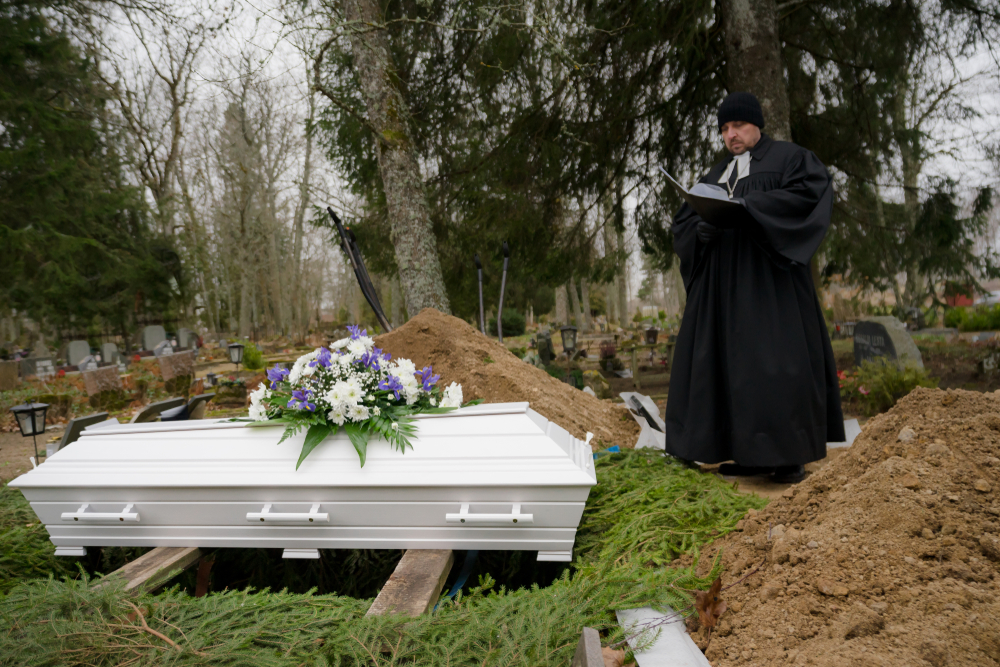Death
Passing On
In Estonia, death was traditionally seen as a passage from one form of existence into another. Although most Estonians are not devout, rituals associated with death are mainly derived from Christian traditions. If a person is ill and thought to be dying, family members normally sit with the dying person. In the past, it was common to summon everyone who knew the person, or even a whole village, but today only immediate family members come to the bedside.
Typical Practices
After death, the body is normally washed, dressed, and placed in a coffin. Not long ago, family members commonly did this, though now it is more usual for professionals to prepare a body for burial. Family and friends generally come and view the body at this time. Funerals commonly take place in church, and most Estonians are buried in coffins in cemeteries.
Most Estonians believe in heaven and hell as defined by the Christian Church even if they do not practice any religion. Those who are free from sin go to heaven, while sinners are sent to hell to suffer for eternity.
Copyright © 1993—2025 World Trade Press. All rights reserved.

 Estonia
Estonia 


